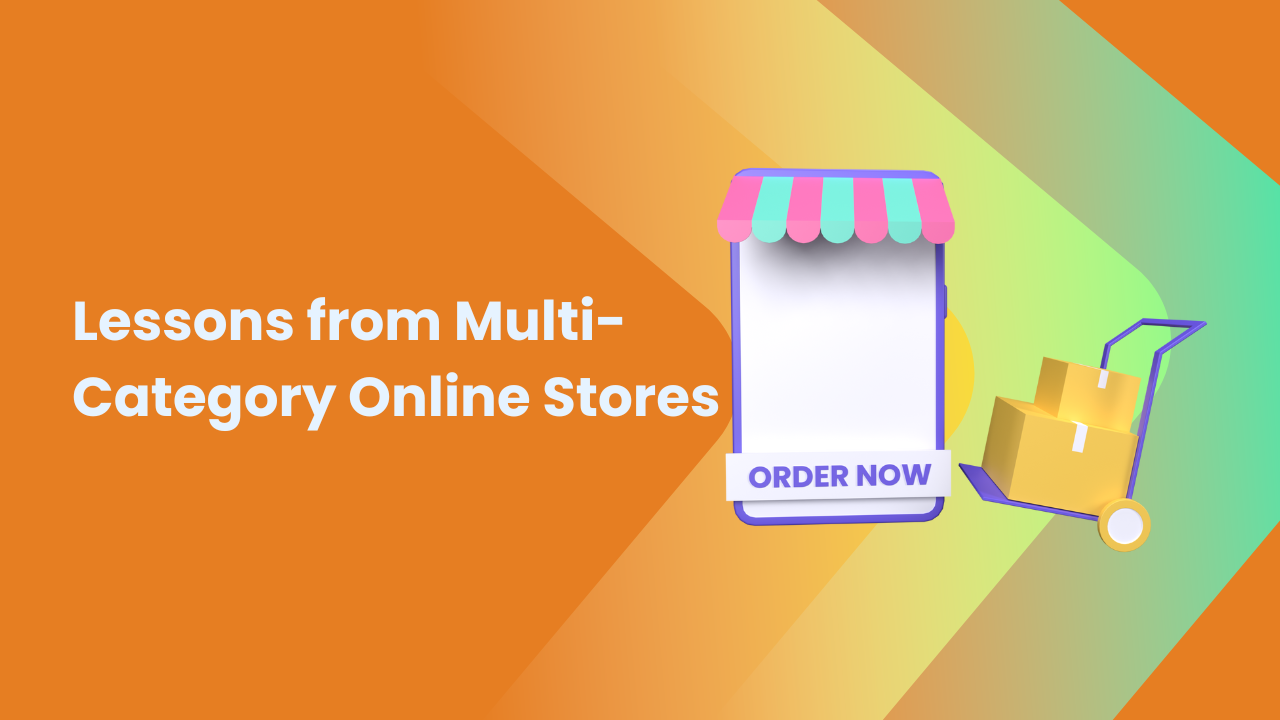Share this Article
The e-commerce landscape in Nepal has seen a radical transformation in the past few years, as more and more Nepali consumers are turning to online shopping for their daily needs. Once a niche activity in the country, online shopping has now become a mainstream phenomenon, with individuals of all age groups and socio-economic backgrounds embracing digital retail. Several factors contribute to this seismic shift, and in this article, we will explore in depth why Nepali consumers are increasingly choosing online shopping over traditional retail stores.
The acceleration of digital adoption, coupled with shifts in consumer preferences, technological advancements, and global trends, has opened the doors to the online retail sector. Additionally, the economic and social changes in Nepal have further stimulated the growth of this sector. We will examine the key drivers behind this surge, including mobile penetration, better internet connectivity, the availability of e-commerce platforms, competitive pricing, and the growing influence of social media.
1. Mobile and Internet Penetration: The Cornerstone of E-commerce Growth
One of the main reasons why Nepali consumers are flocking to online shopping platforms is the steady increase in both internet access and mobile phone usage in the country. In the last decade, Nepal has witnessed a significant improvement in its internet infrastructure. According to Nepal Telecommunications Authority, more than 80% of the Nepali population now has access to the internet, a marked improvement from just a few years ago. With affordable data plans and increased access to mobile networks, more individuals from all parts of the country are online than ever before.
The Role of Smartphones in E-commerce
Smartphones have been instrumental in fueling e-commerce growth in Nepal. With the widespread availability of affordable smartphones, many Nepali consumers now rely on their mobile devices to access e-commerce websites and make purchases. The global trend of smartphone adoption is reflected in Nepal as well, where mobile phones have become the primary means of accessing the internet. Whether it’s checking out the latest sales or simply browsing through a store’s inventory, Nepali consumers can now shop with just a few taps of their fingers.
The growth of mobile commerce, or m-commerce, in Nepal cannot be understated. Mobile shopping has grown exponentially, with platforms like Daraz Nepal, SastoDeal, and HamroBazar offering user-friendly mobile apps that make the shopping experience seamless. The rise of m-commerce has empowered Nepali consumers to shop on-the-go, furthering the shift toward online shopping.
Affordable Data Plans and Wi-Fi Accessibility
The increase in the availability of affordable mobile data packages has also contributed to the rise in online shopping. Data plans that were once expensive are now more budget-friendly, enabling consumers from different income groups to access e-commerce websites and apps. Furthermore, internet penetration has expanded beyond urban areas to rural and remote parts of Nepal, where people previously had limited or no access to online shopping. The availability of public Wi-Fi in cafes, public spaces, and offices has also facilitated the growth of online retail.
2. The Convenience Factor: Shopping from the Comfort of Home
Perhaps one of the most significant reasons Nepali consumers are moving toward online shopping is the sheer convenience it offers. Traditional retail often requires consumers to travel to physical stores, endure long lines, and deal with the inconvenience of finding parking spots or navigating crowded malls. Online shopping, on the other hand, provides the luxury of browsing products from the comfort of one's home.
24/7 Availability
Online stores are available around the clock, allowing consumers to shop whenever it’s convenient for them. Unlike traditional brick-and-mortar stores, which have fixed operating hours, e-commerce platforms allow consumers to browse, compare prices, and make purchases at any time of the day or night. This flexibility makes online shopping a more appealing option for busy individuals, working professionals, and people who prefer not to waste time in crowded markets.
Product Variety and Availability
One of the most notable advantages of shopping online is the sheer variety of products available at one’s fingertips. Whether it’s clothing, electronics, or everyday household items, online platforms provide a wider selection than most local physical stores. In the past, Nepali consumers had to travel to larger cities or even abroad to find specialty items. Now, e-commerce platforms offer a wide range of both local and international products, making it easy for consumers to access goods that may not be available in their immediate vicinity.
For example, when looking for electronic gadgets, Nepali consumers no longer need to rely on specific stores in Kathmandu or Pokhara. E-commerce giants like Daraz allow consumers from across the country to purchase high-tech products such as smartphones, laptops, and accessories with ease.
Product Comparisons and Reviews
Another factor that appeals to Nepali consumers is the ability to compare products across different online stores. Consumers can look at various product specifications, read reviews, and check ratings before making a purchase decision. This feature is especially useful for high-involvement products like electronics or home appliances, where consumers are keen on making informed decisions.
The ability to read customer reviews also fosters a sense of confidence in the products being purchased. Seeing positive feedback from other consumers helps alleviate concerns about quality and reliability, which are often barriers to online shopping.
3. Competitive Pricing and Exclusive Deals
Online platforms in Nepal frequently offer better pricing than their offline counterparts, which significantly influences consumer behavior. The ability to browse multiple stores and find the best price for a product is a huge draw for Nepali shoppers. Furthermore, online retailers often run promotions, flash sales, and discounts, which entice customers to make purchases.
Flash Sales and Limited-Time Offers
Flash sales and limited-time offers are common strategies employed by Nepali e-commerce platforms to create urgency and encourage impulse buying. These promotions offer significant discounts on certain products for a short period, driving customers to make faster purchasing decisions. For example, Daraz regularly hosts flash sales during festivals like Dashain and Tihar, attracting consumers who are looking to make the most of seasonal discounts.
Discount Coupons and Cashback Offers
Another key advantage of shopping online is the availability of discount coupons and cashback offers. Many e-commerce websites have partnerships with payment gateways, which allow them to offer cashback or discounts on purchases when consumers use specific payment methods like Khalti, eSewa, or credit/debit cards. These offers provide added value to customers and make online shopping even more attractive.
4. Social Media Influence and Digital Advertising
In today’s digital age, social media plays a massive role in shaping consumer purchasing behavior. Platforms like Facebook, Instagram, and YouTube have become integral to marketing strategies for Nepali e-commerce businesses. Brands use social media to not only promote their products but also to engage with their customers, share reviews, and run targeted advertising campaigns.
Influencer Marketing and Reviews
Social media influencers, celebrities, and content creators have become powerful agents in driving online sales in Nepal. These individuals have large followings, and when they promote products through sponsored posts, their recommendations often lead to increased consumer interest and online purchases. Influencer marketing has become a key strategy for e-commerce brands to reach new customers, especially younger audiences who are more likely to trust the opinions of online personalities.
Targeted Ads and Personalized Shopping Experience
Online retailers in Nepal have increasingly invested in digital marketing tools that enable them to target specific customer segments with personalized ads. This targeted approach has proven to be effective, as consumers are more likely to make purchases when they are presented with products that align with their preferences. Facebook and Instagram ads, based on browsing history and user interests, make it easier for businesses to showcase relevant products to the right audience, increasing the likelihood of conversions.
5. Payment Systems: Secure, Reliable, and Convenient
In the past, concerns about payment security were a significant barrier to online shopping in Nepal. However, with the rise of secure payment systems like eSewa, Khalti, IME Pay, and Nabil Pay, Nepali consumers have become more confident in making online transactions. These platforms offer a variety of payment options, including mobile wallets, bank transfers, and credit/debit card payments, making it easy for consumers to pay for their purchases.
Cash on Delivery: A Trusted Option
For many Nepali consumers, the option of cash on delivery (COD) remains a key reason why they prefer online shopping. COD allows consumers to pay for products only when they are delivered to their doorstep, which alleviates concerns about fraud or receiving counterfeit goods. This payment method has contributed to the growing trust in e-commerce platforms, particularly for first-time buyers.
Secure Payment Gateways
Additionally, the implementation of secure payment gateways has made online transactions safer than ever before. Nepali e-commerce platforms have partnered with trusted payment service providers to ensure that customers’ financial data is protected during online transactions.
6. The Growth of Local E-commerce Platforms
Local e-commerce platforms have played a pivotal role in the rise of online shopping in Nepal. Platforms such as SastoDeal, HamroBazar, and OkDam have contributed significantly to the local e-commerce boom by providing Nepali consumers with a platform to shop for various products at competitive prices. These platforms have not only enhanced the shopping experience but also created employment opportunities and contributed to the overall growth of the digital economy in Nepal.
Conclusion: A Bright Future for Online Shopping in Nepal
Online shopping in Nepal is experiencing an unprecedented rise, driven by factors such as better internet access, the widespread use of smartphones, the convenience of shopping from home, competitive pricing, and the growing influence of social media and digital marketing. With the introduction of secure payment systems, fast delivery options, and a broader range of products, Nepali consumers are increasingly embracing e-commerce as a primary shopping channel.
As internet penetration continues to increase, and as more consumers gain confidence in online payment methods and digital transactions, we can expect online shopping to become even more ingrained in the lives of Nepali consumers. The future of e-commerce in Nepal looks bright, and with local and international platforms adapting to meet the needs of the market, online shopping will continue to thrive and evolve in the coming years.
Categories:
E-commerce Tips & Tutorials
Tags:
EcommerceTrends
,
NepalRetailShift
,
OnlineShoppingTrends
,
EcommerceInsights







